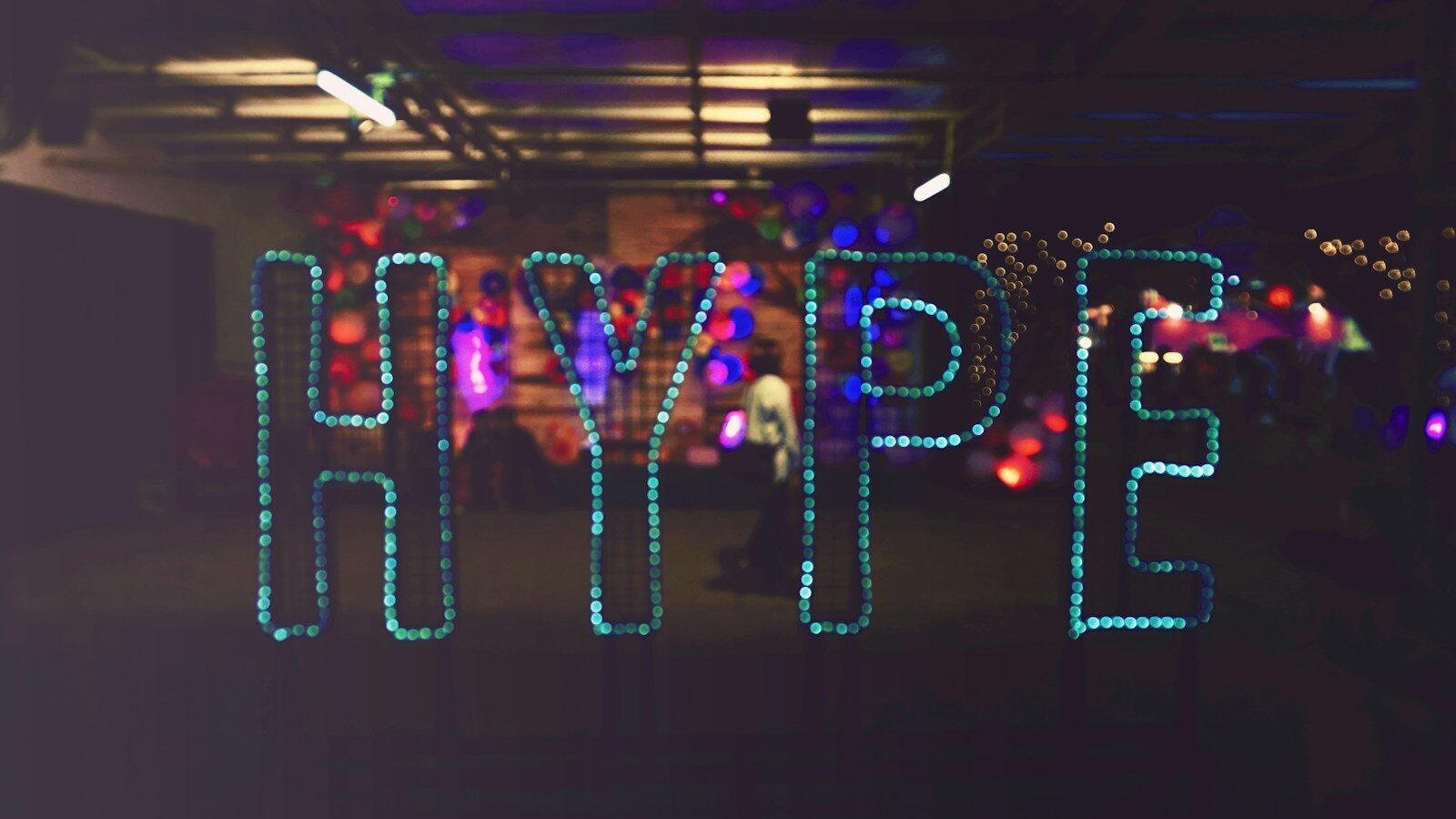All my professional life in L&D, the question of how technology could change the future of learning at work has fascinated me. But it wasn’t until a few years ago I realised the more important question was, ‘why should technology change the future of learning at work?’
Two years ago, I set out to try and answer that question. In 2018, I put behind me 108 quarters working in the software industry. I was inspired in part by the last five years of my career where I’d worked with many leaders at Microsoft to help build a new learning culture… a journey that Microsoft would be, I am sure, first to say is still very much a work-in-progress, but a journey inspired and led by Microsoft’s third CEO, Satya Nadella, and his now-famous ambition of changing the company from a ‘know-it-all’ to a ‘learn-it-all’ culture.
Many companies are also seeking to build a robust internal learning culture to help create value. Chief learning officer Simon Brown, who’s leading a similar global effort at pharmaceutical giant Novartis, has told me on my podcast that, again, a new dynamic CEO had come in and seen culture as one of the levers to realise opportunity, for example.
In Novartis’s case, Brown told me, the trigger is a new focus on ‘curiosity’. I was intrigued; why would a pharmaceutical company, based surely by definition on science, need curiosity to be fostered? Wasn’t it a natural product of a scientific environment? He told me:
“Yes, there was some degree of curiosity from science and discovery, but we also had a lot of experts and there was an expectation around knowing the answer rather than coming out and saying, No, actually I don’t know, I’ll go away and find it out.”
You can listen to our full conversation with Brown on the Learning is the New Working podcast here.
The question for everyone in L&D now has to be, ‘how can we best prepare people for this rapidly changing and uncertain future of work?’
Not to predict the future, but be less surprised by it
I don’t think Novartis is alone in looking at ways to create an environment where it’s now OK to not know the answer, to try things and for those things to fail so we can learn from them and move on. Emerging as the way forward is a combination of psychological safety to express doubt and a growth mindset based on openness to learning in the service of creating greater value.
But equally clear is that this work is a far cry from the traditional practices of L&D, with their emphasis on content and courses and training plans – a toolkit with core elements developed over a hundred years ago. This is important because, as L&D influencer Lisa Kay Solomon taught me, thinking about the future is not about predicting what will happen, it has to be about understanding the forces that are at work on you today:
“Organisations do strategic planning, SWOT analysis, looking from the inside out. But that leaves them blindsided to how the world is changing around them. It turns out that if we just put our attention towards those external trends, we can get much better at spotting them – not so that we predict the future, but so that we are less surprised by it, and so we’re more able to take advantage of an opening opportunity… not just what’s happening in the competitive space, but what’s happening around trends, in demography or in social trends.” (Hear more from Lisa Kay Soloman here.)
The future is already here, it’s just not as yet visible everywhere.
As Solomon and others note, one of the biggest examples is that younger generations seem less interested in buying things and much more interested in sharing things. That’s had a tremendous impact on many, many industries and organisations. And nowadays, whatever industry you are in, technology is a game-changer, changing the face of not only what companies are able to create, but what customers expect.
I have to conclude with yet another proof point of that deeply perceptive remark by science fiction author William Gibson that the future is already here, it’s just not as yet visible everywhere. Because I think I know what the future of work is, and it’s one that should be of concern to every reader of Training Zone.
Young people and the rise of the hustle
“You know, there are some brutal truths these days in Africa, and probably elsewhere too,” highlights Rob Burnett, a social entrepreneur working in East Africa who runs a social media based learning programme in Kenya called Shujaaz. “There aren’t enough jobs. The formal sector is not growing at the speed required to employ, absorb and inspire the numbers of young people who are seeking a livelihood.”
“In Kenya today, 1.3 million young people are going to enter the job market—but only about 5% of that 1.3 are actually going to get a formal job. That means over a million young people are going to be seeking something to do this year, and to survive, they’re going to have to hustle, finding a way to make some cash. This is the reality for hundreds of millions of young people across Africa who aren’t going to get the chance to go to an office anytime soon and aren’t going to get the opportunity to walk into a factory or a workshop and leave on a Friday with a pay packet. The world is not moving at the speed required to keep up with the huge bubble of youth entering the job market.”
I believe that the mission and purpose of next generation L&D is starting to come into focus.
That bleak employment future became more evenly distributed this year, accelerated by the pandemic. Over 23 million Americans were plunged into unemployment in April this year, close to 15% of the eligible US workforce. In the UK, only 18% of University graduates secured jobs before graduation this summer, a ratio that’s more typically 60%. On the job site ZipRecruiter, the number of postings for entry level jobs typically taken by college graduates has fallen 73% over the past three months. How far away in a COVID-battered economy are Britain’s young people from a similar challenge?
Burnett says he sees so many inspirational responses, with young Kenyans being enterprising and entrepreneurial, looking for short gig economy opportunities, making themselves available and seeing where a buck can be generated. I don’t envy young people facing this, but maybe it’s all of us now. If there’s one thing the pandemic has taught us, it’s that the world of work is changing, and fast.
The question for everyone in L&D now has to be, ‘how can we best prepare people for this rapidly changing and uncertain future of work?’ For me, futurologist Martin Ford hits the nail on the head when he says that the most important skills anyone can learn for this future is how to keep learning, how to adapt, and how to do that very effectively and with great enjoyment. Others have said that the ability to learn and unlearn is an essential skill for our future, too. And I agree.
L&D’s new mission
In Kenya, in response to massive unemployment, Rob Burnett has built an extraordinary professional development engine that helps millions of entrepreneurial young Africans develop the practical skills and learning mindsets that they need to thrive. His work is grounded in hard data, is deeply empathetic, radically learner centric, and operates at massive scale. It is a far cry from traditional L&D, but perhaps provides a glimpse of what our future as learning professionals might look like.
I believe that the mission and purpose of next generation L&D is starting to come into focus. Our job is not just to train for the work of today, but to prepare people and advocate for work of the future – better work, that’s more human, more inclusive, more flexible, perhaps even more fun.
This will require us to execute with scientific precision and practices, broad collaboration across disciplines, a design thinking mindset, the abandonment of historical practices that aren’t working any more, and the employment of rapid experimentation to build cultures of curiosity and lifelong learning for all.
It’s a tough transition, but since millions of young and future workers are looking for help, one that we must step up to.
Interested in learning more on this topic? Listen to Chris Pirie’s podcast conversation with Rob Burnett here.
All my professional life in L&D, the question of how technology could change the future of learning at work has fascinated me. But it wasn't until a few years ago I realised the more important question was, ‘why should technology change the future of learning at work?’
Two years ago, I set out to try and answer that question. In 2018, I put behind me 108 quarters working in the software industry. I was inspired in part by the last five years of my career where I'd worked with many leaders at Microsoft to help build a new learning culture… a journey that Microsoft would be, I am sure, first to say is still very much a work-in-progress, but a journey inspired and led by Microsoft's third CEO, Satya Nadella, and his now-famous ambition of changing the company from a ‘know-it-all’ to a ‘learn-it-all’ culture.
Many companies are also seeking to build a robust internal learning culture to help create value. Chief learning officer Simon Brown, who's leading a similar global effort at pharmaceutical giant Novartis, has told me on my podcast that, again, a new dynamic CEO had come in and seen culture as one of the levers to realise opportunity, for example.
In Novartis’s case, Brown told me, the trigger is a new focus on ‘curiosity’. I was intrigued; why would a pharmaceutical company, based surely by definition on science, need curiosity to be fostered? Wasn't it a natural product of a scientific environment? He told me:
“Yes, there was some degree of curiosity from science and discovery, but we also had a lot of experts and there was an expectation around knowing the answer rather than coming out and saying, No, actually I don't know, I'll go away and find it out.”
You can listen to our full conversation with Brown on the Learning is the New Working podcast here.
The question for everyone in L&D now has to be, ‘how can we best prepare people for this rapidly changing and uncertain future of work?’
Not to predict the future, but be less surprised by it
I don’t think Novartis is alone in looking at ways to create an environment where it’s now OK to not know the answer, to try things and for those things to fail so we can learn from them and move on. Emerging as the way forward is a combination of psychological safety to express doubt and a growth mindset based on openness to learning in the service of creating greater value.
But equally clear is that this work is a far cry from the traditional practices of L&D, with their emphasis on content and courses and training plans – a toolkit with core elements developed over a hundred years ago. This is important because, as L&D influencer Lisa Kay Solomon taught me, thinking about the future is not about predicting what will happen, it has to be about understanding the forces that are at work on you today:
“Organisations do strategic planning, SWOT analysis, looking from the inside out. But that leaves them blindsided to how the world is changing around them. It turns out that if we just put our attention towards those external trends, we can get much better at spotting them – not so that we predict the future, but so that we are less surprised by it, and so we're more able to take advantage of an opening opportunity… not just what's happening in the competitive space, but what's happening around trends, in demography or in social trends.” (Hear more from Lisa Kay Soloman here.)
The future is already here, it’s just not as yet visible everywhere.
As Solomon and others note, one of the biggest examples is that younger generations seem less interested in buying things and much more interested in sharing things. That's had a tremendous impact on many, many industries and organisations. And nowadays, whatever industry you are in, technology is a game-changer, changing the face of not only what companies are able to create, but what customers expect.
I have to conclude with yet another proof point of that deeply perceptive remark by science fiction author William Gibson that the future is already here, it’s just not as yet visible everywhere. Because I think I know what the future of work is, and it’s one that should be of concern to every reader of Training Zone.
Young people and the rise of the hustle
“You know, there are some brutal truths these days in Africa, and probably elsewhere too,” highlights Rob Burnett, a social entrepreneur working in East Africa who runs a social media based learning programme in Kenya called Shujaaz. “There aren't enough jobs. The formal sector is not growing at the speed required to employ, absorb and inspire the numbers of young people who are seeking a livelihood.”
“In Kenya today, 1.3 million young people are going to enter the job market—but only about 5% of that 1.3 are actually going to get a formal job. That means over a million young people are going to be seeking something to do this year, and to survive, they're going to have to hustle, finding a way to make some cash. This is the reality for hundreds of millions of young people across Africa who aren't going to get the chance to go to an office anytime soon and aren't going to get the opportunity to walk into a factory or a workshop and leave on a Friday with a pay packet. The world is not moving at the speed required to keep up with the huge bubble of youth entering the job market.”
I believe that the mission and purpose of next generation L&D is starting to come into focus.
That bleak employment future became more evenly distributed this year, accelerated by the pandemic. Over 23 million Americans were plunged into unemployment in April this year, close to 15% of the eligible US workforce. In the UK, only 18% of University graduates secured jobs before graduation this summer, a ratio that’s more typically 60%. On the job site ZipRecruiter, the number of postings for entry level jobs typically taken by college graduates has fallen 73% over the past three months. How far away in a COVID-battered economy are Britain’s young people from a similar challenge?
Burnett says he sees so many inspirational responses, with young Kenyans being enterprising and entrepreneurial, looking for short gig economy opportunities, making themselves available and seeing where a buck can be generated. I don’t envy young people facing this, but maybe it’s all of us now. If there's one thing the pandemic has taught us, it’s that the world of work is changing, and fast.
The question for everyone in L&D now has to be, ‘how can we best prepare people for this rapidly changing and uncertain future of work?’ For me, futurologist Martin Ford hits the nail on the head when he says that the most important skills anyone can learn for this future is how to keep learning, how to adapt, and how to do that very effectively and with great enjoyment. Others have said that the ability to learn and unlearn is an essential skill for our future, too. And I agree.
L&D’s new mission
In Kenya, in response to massive unemployment, Rob Burnett has built an extraordinary professional development engine that helps millions of entrepreneurial young Africans develop the practical skills and learning mindsets that they need to thrive. His work is grounded in hard data, is deeply empathetic, radically learner centric, and operates at massive scale. It is a far cry from traditional L&D, but perhaps provides a glimpse of what our future as learning professionals might look like.
I believe that the mission and purpose of next generation L&D is starting to come into focus. Our job is not just to train for the work of today, but to prepare people and advocate for work of the future – better work, that's more human, more inclusive, more flexible, perhaps even more fun.
This will require us to execute with scientific precision and practices, broad collaboration across disciplines, a design thinking mindset, the abandonment of historical practices that aren't working any more, and the employment of rapid experimentation to build cultures of curiosity and lifelong learning for all.
It’s a tough transition, but since millions of young and future workers are looking for help, one that we must step up to.








